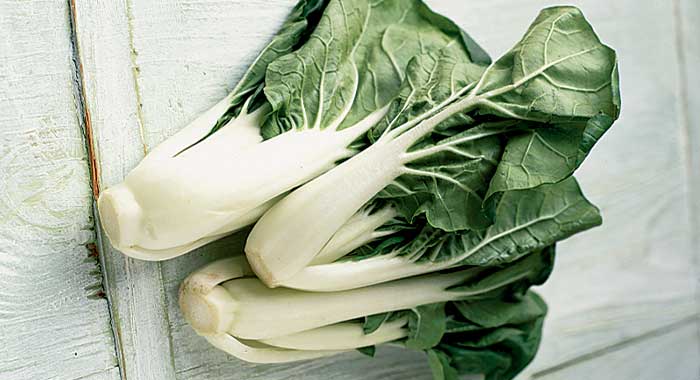
Pronounce it: pak-choy
This member of the cabbage family has a number of different names, including pak choi, bok choy, horse’s ear, Chinese celery cabbage and white mustard cabbage. Its structure looks like a squat celery, with either white or very pale green short, chunky stalks and glossy, deep green leaves.
The texture of both leaves and stalks is crisp, and the flavour is somewhere between mild cabbage and spinach. If very young it can be eaten raw in salads, but is best when briefly cooked.
Availability
All year round.
Choose the best
Go for pak choi with perky-looking leaves and firm, unblemished stalks. The smallest examples tend to be the most tender.
How to prepare pak choi
Wash. If you like you can cut the leaves from the stems, as they cook at different speeds – the leaves cook much quicker, so you could add just towards the end of cooking. Alternatively, if you want to put leaves and stems in the pan at the same time, cut the stems into wide strips and the leaves into finer strips. Very young pak choi can be left whole, or halved or quartered.
How to store pak choi
In a perforated bag in the fridge for up to three days.
How to cook pak choi
There are three main cooking methods:
- Stir-fry (2 minutes)
- Steam (sliced 2-3 minutes; whole up to 8 minutes)
- Simmer in water (2-3 mins).
Alternatives
Try cabbage or spinach.
Be the first to comment on "Pak choi"